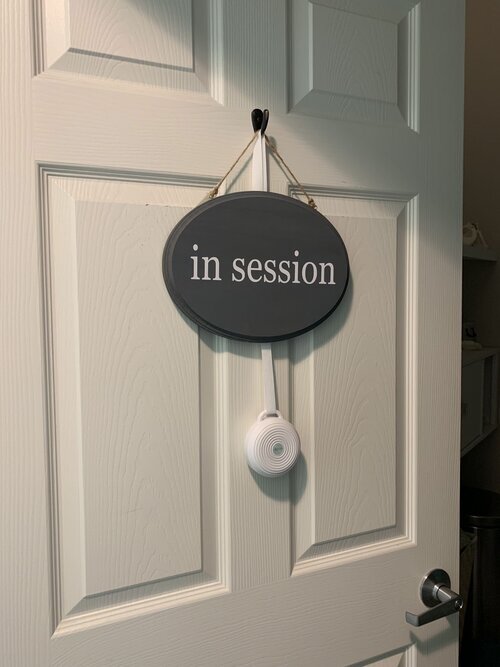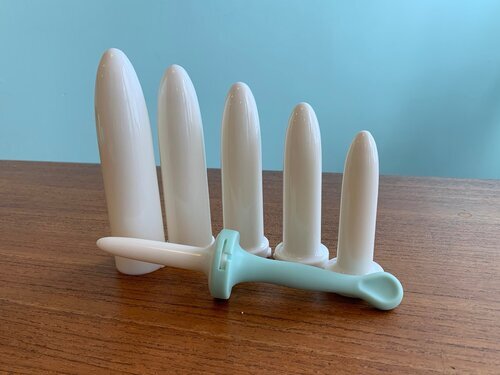
During your postpartum recovery, your greatest source of knowledge and support is a pelvic floor physical therapist. He or she will be your crucial partner when it comes to your triumphant return to fitness. But after 40 weeks of pregnancy with all the poking and prodding culminating in the striking intimacy of childbirth, having one more healthcare professional all “up in your business” can seem daunting. And if you’ve never visited a pelvic PT, you may not know what to expect.
We’re here to help demystify your first visit with a pelvic floor physical therapist, so you feel like an empowered participant in your own health and recovery.
Why See a Pelvic Floor Physical Therapist?
You should book your appointment if you are pregnant or postpartum and experiencing any of the following:
-
Incontinence- leaking urine, feces or flatus
-
Urge incontinence- feeling like you have to pee all the time or that the output doesn’t match the urge
-
Difficulty voiding the bladder or bowels
-
Prolapse- a feeling of dragging heaviness in the bowels
-
Painful sex or vaginal penetration (a tampon counts)
-
Musculoskeletal pain around the pelvis- SI joint pain, groin and inner thigh pain, low back pain, sciatica, pubic symphysis pain, abdominal pain
-
Diastasis recti
-
Vaginismus- a muscle spasm of the pelvic floor

The Internal Exam
The visit itself begins with getting to know each other. The pelvic floor physical therapist will take a medical history, discuss your specific concerns and your goals. The pelvic floor PT will describe how the exam will proceed and answer any questions you have up front.

For the majority of women, an internal exam is recommended. However, you may decline or interrupt the exam at any point. A pelvic floor PT typically does not use stirrups or a speculum. Rather, a gloved finger will be inserted into your vagina, and you will be asked to perform various tasks like contractions, holds, and push-outs. You may be asked to repeat these tasks in various positions like sitting or standing, which is often the most awkward part. Just a heads up, depending on your symptoms you may need to have an anal exam. It’ll be over before you know it, we promise! Your lap will be covered with a drape and the physical therapist will reach underneath. It is so much less invasive than a gynecological exam.
Some practices these days use biofeedback tools. These are bluetooth-enabled devices that you squeeze vaginally and the output is transmitted to your smartphone or computer. Your vagina is officially living in the future!
The External Exam
You will also be checked for diastasis recti, or the separation of the abdominal muscles that occurs during pregnancy and may continue unresolved postpartum. The physical therapist may evaluate the function of the muscles, connective tissue and nerves of the abdominals and hips in addition to the pelvic floor. A good physical therapist will give you a lesson in anatomy and may show you drills to better connect your breath and movements to your deep core and pelvic floor system.

Treatment and Homework
Any diagnosis will be explained to you in detail and you will receive a treatment plan. Your treatment might include:
-
Kegels
-
Breathing or relaxation techniques
-
Manual therapy, self-massage and stretching
-
Full body strength exercises
-
Vaginal weights or biofeedback devices
-
Vaginal dilators or vibrating wands

Appointments and Cost
In most major cities, pelvic floor physical therapists can be found in most hospital systems. All you need is a referral from your Ob/Gyn. In these cases, your visit should be covered by insurance.
However, in smaller cities and rural areas, access to pelvic floor physical therapy can be either limited or prohibitively expensive. Unlike more pelvically enlightened countries (France, je t’aime…) many practitioners in the United States aren’t covered by insurance. We suggest you visit the Pelvic Guru Directory to see availability in your area.
« Exercise Intensity During Pregnancy: How Much is Too Much?Next Post:
Early Postpartum Stretches »

